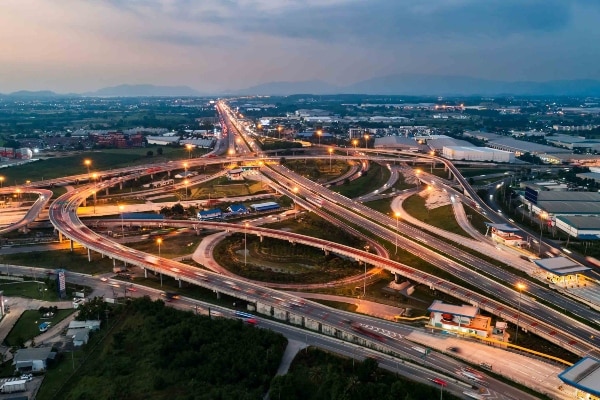-
Featured services
2026 Global AI Report: A Playbook for AI Leaders
Why AI strategy is your business strategy: The acceleration toward an AI-native state. Explore executive insights from AI leaders.
Access the playbook -
Services
Alle Services und Produkte anzeigenNutzen Sie unsere Fähigkeiten, um die Transformation Ihres Unternehmens zu beschleunigen.
-
Services
Network-Services
Beliebte Produkte
-
Services
Cloud
Beliebte Produkte
-
Services
Consulting
-
Edge as a Service
-
Services
Data und Artificial Intelligence
- KI und intelligente Lösungen
- Daten-/KI-Strategie und -Programm
- Data Engineering und Plattformen
- Daten-Governance und -management
- Datenvisualisierung und Entscheidungsfindung
- $name
- GenAI Platforms
- GenAI Industry Services
- GenAI Infrastructure Services
- GenAI Value Transformation
- Data und Artificial Intelligence
-
-
Services
Global Data Centers
-
Beliebte Produkte
-
Services
Application Services
-
Services
Sustainability Services
-
Services
Digital Workplace
-
Services
Business Process Services
-
Services
Generative AI
-
Services
Cybersecurity
-
Services
Enterprise Application Platforms
![]()
IDC MarketScape: Anbieterbewertung für Rechenzentrumsservices weltweit 2023
Wir glauben, dass Marktführer zu sein eine weitere Bestätigung unseres umfassenden Angebotes im Bereich Rechenzentren ist.
Holen Sie sich den IDC MarketScape -
-
Erkenntnisse
Einblicke und RessourcenErfahren Sie, wie die Technologie Unternehmen, die Industrie und die Gesellschaft prägt.
-
Erkenntnisse
Ausgewählte Einblicke
-
Die Zukunft des Networking
-
Using the cloud to cut costs needs the right approach
When organizations focus on transformation, a move to the cloud can deliver cost savings – but they often need expert advice to help them along their journey
-
So funktioniert Zero-Trust-Sicherheit für Ihr Unternehmen
Sorgen Sie dafür, dass Zero-Trust-Sicherheit für Ihr Unternehmen in hybriden Arbeitsumgebungen funktioniert.
-
-
Erkenntnisse
![]()
Copilot für Microsoft 365
Jeder kann mit einem leistungsstarken KI-Tool für die tägliche Arbeit intelligenter arbeiten.
Copilot noch heute entdecken -
-
Lösungen
Alle LösungenWir helfen Ihnen dabei, den Anforderungen an kontinuierliche Innovation und Transformation gerecht zu werden
Global Employee Experience Trends Report
Excel in EX mit Forschung basierend auf Interviews mit über 1.400 Entscheidungsträger:innen auf der ganzen Welt.
Besorgen Sie sich den EX-Report -
Erfahren Sie, wie wir Ihre Geschäftstransformation beschleunigen können
-
Über uns
Neueste Kundenberichte
-
Liantis
Im Laufe der Zeit hatte Liantis, ein etabliertes HR-Unternehmen in Belgien, Dateninseln und isolierte Lösungen als Teil seines Legacysystems aufgebaut.
-
Randstad
We ensured that Randstad’s migration to Genesys Cloud CX had no impact on availability, ensuring an exceptional user experience for clients and talent.
-
-
![Heineken Landing Page]()
NTT DATA und HEINEKEN
HEINEKEN revolutioniert die Mitarbeitererfahrung und die Zusammenarbeit mit einem hybriden Arbeitsplatzmodell.
Lesen Sie die Geschichte von HEINEKEN -
- Karriere
Topics in this article
Airports are high-stakes environments where milliseconds matter. From aircraft maintenance to baggage tracking, every function depends on a network that’s fast, secure and always available.
This is where private 5G comes in. From tarmac to terminal, it supplies next-generation connectivity that’s rewriting the rules of aviation operations, enabling safety, efficiency and immersive passenger experiences across vast, dynamic environments.
For airports aiming to lead, the future is in the network.
The runway ahead: Key challenges for airports
Before delving into the network transformation imperative, let’s consider some of the unique, high-stakes challenges that airport operators face in their pursuit of operational excellence, safety and cost efficiency.
- Massive operational footprint: Airports span enormous Frankfurt Airport alone covers 2,500 hectares, equivalent to a large Australian farm, a Canadian nature reserve or several thousand US football fields. This vast area makes traditional wired infrastructure not only costly and increasingly obsolete. Connectivity must reach from terminal gates to perimeter fences, and across tarmacs, hangars and cargo zones.
- Connectivity black spots: Conventional Wi-Fi sometimes falters in critical areas — including under aircraft wings. These gaps leave technicians and equipment offline and translate into lost productivity and delayed operations.
- Real-time data demands: From runway sensors to perimeter surveillance, airports rely on real-time IoT data for safety, security and efficiency. Legacy networks often can’t keep pace.
- Labor-intensive manual inspections: At many airports, runway checks, fence patrols and equipment audits still require people to travel across vast distances — consuming time, fuel and workforce capacity.
- Security and compliance at scale: Airports must keep track of thousands of assets while meeting strict operational-technology segmentation and protecting against intellectual-property theft, which is often impossible with traditional methods.
- Network agility for innovation: To support sustainability goals and emerging technologies — from autonomous vehicles to AI-driven analytics — networks must be agile, scalable and future-ready.
Only when airports deal with all these challenges can they confidently proceed with the digital transformation of their operations.
Enter private 5G
To overcome legacy infrastructure constraints and capitalize on emerging opportunities, airport operators are increasingly turning to private 5G networks. These networks provide secure, low-latency, high-bandwidth data transmission in real time across vast operational areas where wired solutions are impractical.
Importantly, private 5G solutions allow operators to embed automation into every aspect of their operations. Think of autonomous guided vehicles (AGVs) parking with precision, or drones circling overhead performing real-time surveillance, scanning perimeters and alerting teams before threats escalate. Runway inspections can be handled by aerial units that transmit high-resolution data in milliseconds, flagging cracks and debris before they become hazards.
Ground-crew technicians no longer need to search through technical manuals or wait for engineers to troubleshoot aircraft issues. Equipped with augmented-reality (AR) glasses powered by private 5G, they receive real-time overlays of diagnostics, repair instructions and remote expert guidance — right on the tarmac.
Passengers also benefit
Inside terminals, private 5G is powering a new era of passenger experience, safety and operational efficiency.
For example, security teams needn’t rely on siloed camera feeds and delayed alerts. Private 5G can stitch together thousands of high-definition video streams, biometric sensors and AI threat detection and feed the information to a real-time command center. If a suspicious package is left near a gate, the system will flag it instantly, triangulate its origin and dispatch security — all within seconds.
Retail and food services benefit from seamless point-of-sale connectivity, even in crowded terminal zones where Wi-Fi can be patchy. AR-based wayfinding, real-time crowd management and predictive maintenance for heating, ventilation, air-conditioning and lighting systems become feasible thanks to the network’s ability to support thousands of IoT devices simultaneously. This makes the airport experience more comfortable for travelers and helps operators optimize energy use and reduce downtime.
Beyond connectivity: Monetizing the intelligent airport with private 5G
Beyond addressing long-standing operational hurdles, private 5G networks present new monetization opportunities for airports.
For instance, operators can roll out subscription-based access to their networks, offering different service tiers for airlines, logistics companies or even individual travelers, each tailored to specific data and connectivity needs. They could also bundle in value-added services such as cybersecurity, AI-driven analytics, cloud storage and edge computing to create a more compelling suite of offerings.
With the right safeguards — consent and anonymization included — operational data itself could become a powerful asset for market research or more personalized advertising. And on the traveler side, stronger wireless coverage through private 5G opens the door to closer integration with airline loyalty programs, turning connectivity into a perk that encourages long-term subscriptions and repeat use.
The sky is the limit
In short, apart from low-latency, high-bandwidth connectivity across vast operational areas, the compelling technical benefits of private 5G for airport operators also include:
- Built-in security: End-to-end encryption, strong authentication and on-premises control of sensitive data
- Flexible, opex-based financing: No capex outlay for organizations subscribing to a network-as-a-service model (paying a managed service provider a predictable fee that includes everything from network design and deployment to maintenance)
- Reliable spectrum: Licensed bands for stable, interference-free performance
- Priority traffic: Guaranteed quality of service for critical systems, like AGV communications or emergency services, even under a heavy network load
- Scalable and future-ready: Supports thousands of devices; upgrades easily from 4G to 5G
- Incremental deployment: Starting with specific business cases, pilots and proofs of concept, leading to cross-functional collaboration between IT, OT and finance teams
- ALSO READ → From docks to runways, private 5G is revolutionizing seaport and airport operations
Why NTT DATA
NTT DATA is a Leader in the 2024 Gartner® Magic Quadrant™ for Managed Network Services.*
Our deep expertise in IT and systems integration services, including in the global telecommunications industry, makes us the ideal partner for airport operators who are ready to embrace private 5G.
We offer end-to-end private wireless networks as a service, flexible commercial models, a secure-by-design approach and advanced network management and AIOps tools, among other services.
Furthermore, our strategic partnerships with technology providers — including Cisco, Nokia, Ericsson, Celona, BLiNQ Networks, Google, Palo Alto Networks and more — enable us to deliver robust solutions with support for a diverse device ecosystem, including smartphones, tablets, handheld equipment, routers, gateways and specialized IoT devices.
The aviation industry has always been about pushing boundaries: speed, distance, efficiency. Now, connectivity is the next frontier.
Topics in this article
* Gartner, Magic Quadrant for Managed Network Services, By Ted Corbett, Nauman Raja, Jon Dressel, Lisa Pierce, Karen Brown, Danellie Young, 14 October 2024
Gartner does not endorse any vendor, product or service depicted in its research publications, and does not advise technology users to select only those vendors with the highest ratings or other designation. Gartner research publications consist of the opinions of Gartner's research organization and should not be construed as statements of fact. Gartner disclaims all warranties, expressed or implied, with respect to this research, including any warranties of merchantability or fitness for a particular purpose.
GARTNER is a registered trademark and service mark of Gartner, Inc. and/or its affiliates in the U.S. and internationally, and MAGIC QUADRANT is a registered trademark of Gartner, Inc. and/or its affiliates and are used herein with permission. All rights reserved.




